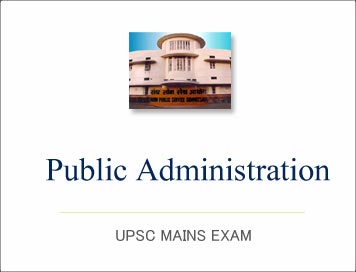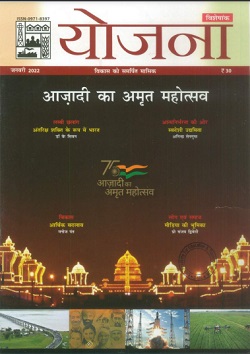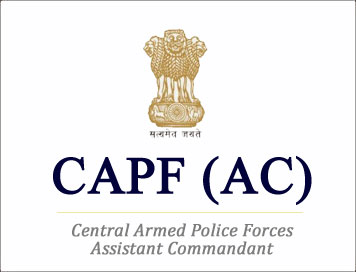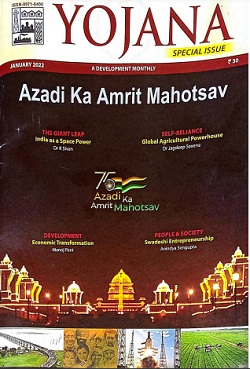
संघ लोक सेवा आयोग सिविल सेवा - मुख्य परीक्षा
(Download) UPSC Mains 2021 General Studies Question Paper:
सामान्य अध्ययन-IV (नीति,अखंडता एवं अभिक्षमता)
-
Exam Name: UPSC IAS Mains General Studies (सामान्य अध्ययन-4) (Paper-4)
-
Year: 2021
-
EXAM DATE : 09-01-2022
Q.1-
(a) उन पाँच नैतिक लक्षागों की पहचान कीजिए, जिनके आधार पर लोक सेवक के कार्य-निष्पादन का आकलन किया जा सकता है। मेट्रिक्स में उनके समावेश का औचित्य सिद्ध कीजिए। (उत्तर 150 शब्दों में दीजिए) (10 Marks)
(b) उन दस आधारभूत मूल्यों की पहचान कीजिए, जो एक प्रभावी लोक सेवक होने के लिए आवश्यक है। लोक सेवकों में गैर-नैतिक व्यवहार के निवारण के तरीकों और साधनों का वर्णन कीजिए।(150 words) (10 Marks)
Q.2-
(a) तर्कसंगत निर्णय लेने के लिए निवेश (इनपुट) के विश्वसनीय स्रोत के रूप में डिजिटल प्रौद्योगिकी का प्रभाव एक बहस का मुद्दा है। उपयुक्त उदाहरण के साथ आलोचनात्मक मूल्यांकन कीजिए। (150 words) (10 Marks)
(b) नैतिक दुविधाओं का समाधान करते समय एक लोक अधिकारी को कार्यक्षेत्र के ज्ञान के अलावा नव-परिवर्तनशीलता और उच्च क्रम की रचनात्मकता की भी आवश्यकता होती है। उपयुक्त उदाहरण सहित विवेचन कीजिए। (150 words) (10 Marks)
Q.3- निम्नलिखित में से प्रत्येक उद्धरण का आपके विचार से क्या अभिप्राय है?
(a) “प्रत्येक कार्य की सफलता से पहले उसे सैकड़ों कठिनाइयों से गुजरना पड़ता है। जो दृढ़निधयी हैं वे ही देर-सरे प्रकाश को देख पाएँगे।" -स्वामी विवेकानंद (150 words) (10 Marks)
(b) "हम बाहरी दुनिया में तब तक शांति प्राप्त नहीं कर सकते जब तक कि हम अपने भीतर शांति प्राप्त नहीं कर लेते। -दलाई लामा (150 words) (10 Marks)
(c) "परस्पर निर्भरता के बिना जीवन का कोई अर्थ नहीं है। हमें एक-दूसरे की जरूरत है और जितनी हम जल्दी इसे सीख लें यह हम सबके लिए उतना ही अच्छा है।" एरिक एरिक्सन (उत्तर 150 शब्दों में दीजिए) (10 Marks)
Q.4-
(a) अभिवृत्ति एक महत्त्वपूर्ण घटक है, जो मानव के विकास निवेश (इनपुट) का काम करता है। ऐसी उपयुक्त अभिवृत्ति का विकास कैसे करें, जो एक लोक सेवक के लिए आवश्यक है। (उत्तर 150 शब्दों में दीजिए) (10 Marks)
(b) उस नैतिकता अथवा नैतिक आदर्श. जिसको आप अंगीकार करते हैं, से समझौता किए बिना क्या भावनात्म्क बुद्धि अंतरात्मा के संकट की स्थिति से उबरने में सहायता करती है। आलोचनात्मक परीक्षण कीजिए। (उत्तर 150 शब्दों में दीजिए) (10 Marks)
Q.5-
(a) "शरणार्थियों को उस देश में वापस नहीं लौटाया जाना चाहिए जहाँ उन्हें उत्पीड़न अथवा मानवाधिकार का सामना करना पड़ेगा।" खुले समाज और लोकतांत्रिक होने का दावा करने वाले किसी राष्ट्र के द्वारा नैतिक आयाम के उल्लंघन के संदर्भ में इस कथन का परीक्षण कीजिए। (150 words). (10 Marks)
(b) क्या सफल लोक सेवक बनने के लिए निष्पक्ष और गैर-पक्षपाती होना अनिवार्य गुण माना जाना चाहिए? दृष्टांत सहित चर्चा कीजिए। (150 words). (10 Marks)
Q.6-
(a) न्यायपालिका सहित सार्वजनिक सेवा के हर क्षेत्र में निष्पादन, जवाबदेही और नैतिक आचरण सुनिश्चित करने के लिए एक स्वतंत्र और सशक्त सामाजिक अंकेक्षण तंत्र परम आवश्यक है। सविस्तार समझाइए। (उत्तर 150 शब्दों में दीजिए) (10 Marks)
(b)“सत्यनिष्ठा ऐसा मूल्य है, जो मनुष्य को सशक्त बनाता है।" उपयुक्त दृष्टांत सहित औचित्य सिद्ध कीजिए। (150 words). (10 Marks)
Q.7- सुनील एका युवा लोक सेवक है तथा सक्षमता, ईमानदार समर्पण तथा मुश्किल और दुर्वह कामों के लिए अथक प्रयास हेतु उसकी प्रतिष्ठा है। उसकी प्रोफाइल को देखते हुए उसके अधिकारियों ने उसे एक बहुत ही चनौतीपर्ण और संवेदनशील कार्यभार को संभालने के लिए चुना था। उसे अवैध बालू खनन के लिए कुख्यात आदिवासी-बहुल जिले में तैनात किया गया। नदी पट्टी से. अनियंत्रित रूप से बालू उत्खनन करके ट्रको से ढोकर उसको काला बाजार में बेचा जा रहा था। यह अवैध बालू खनन माफिया स्थानीय कार्यकर्ताओं और आदिवासी बाहुबलियों के सहयोग से काम कर रहा था जो बदले में चुनिंदा (गरीब आदिवासियों को रिश्वत देते रहते थे तथा उनकों डरा और धमका कर रखते थे।
सुनील ने एक तेज और ऊर्जावान अधिकारी होने के नाते जमीनी हकीकत पहचानकर और माफिया के द्वारा कुटिल तथा संदिग्ध तत्र के माध्यम से अपनाए गए उनके तोर-तरीका का तुरंत पकड़ लिया। पूछताछ करने पर उसने पाया कि उसके अपने कार्यालय के कुछ कर्मचारियों की उनसे मिलीभगत है और उन्होंने उनके घनिष्ट अवांछनीय गठजोड़ विकसित कर लिया है। सुनील ने उनके खिलाफ कड़ी कार्रवाई शुरू की और उनके बालू में भरे ट्रकों की आवाजाही के अवैध
चालन पर छापा मारना शुरू कर दिया। माफिया भड़क गया क्योंकि पहले बहुत अधिकारियों ने उनके विरुद्ध इतने बड़े कदम नहीं उठाये थे। कार्यालय के कुछ कर्मचारियों ने जो कथित तौर पर माफिया के करीब थे, उनको सूचित किया कि अधिकारी उस जिले में माफिया के अवैध बालू खानन संचालन को साफ करने के लिए दृढ़ संकल्पित है और उन्हें अपूरणीय क्षति हो सकती है।
माफिया शत्रुतापूर्ण हो गया और जवाबी हमला शुरू किया। आदिवासी बाहुबली और माफिया ने उसको गंभीर परिणाम भुगतने की धमकी देना शुरू कर दिया। उसके परिवार (पत्नी और वृद्ध माता) का पीछा किया जा रहा था, वे उनकी वास्तविक निगरानी में थे जिससे कि उन सभी को मानसिक यातना, यंत्रणा और तनाव हो रहा था। उस समय मामले ने गंभीर रूप धारण कर लिया जब एक बाहबली उसके कार्यालय में आया और उसको छापे मारना इत्यादि बंद करने की धमकी दी और कहा कि उसका हाल उसके पूर्व अधिकारियों से अलग नहीं होगा (दस वर्ष पूर्व माफिया द्वारा एक अधिकारी की हत्या कर दी गई थी)।
(a) इस स्थिति को संभालने में सुनील के लिए उपलब्ध विभिन्न विकल्पों की पहचान कीजिए।
(b) आपके द्वारा सूचीबद्ध विकल्पों का आलोचनात्मक मूल्यांकन कीजिए।
(c) आपके विचार से उपर्युक्त में से कौन-सा विकल्प सुनील के लिए सबसे उपयुक्त होगा और क्यों? (उत्तर 250 शब्दों में दीजिए) (20 Marks)
Q.8- आप एक मध्यवर्गीय शहर में डिग्री कॉलेज के उप-प्रधानाचार्य । प्रधानाचार्य हाल ही में सेवानिवृत्त हुए है और प्रबंधन उनके प्रतिस्थापन की तलाश कर रहा है। यह भी माना जाता है कि प्रबंधन आपको प्रधानाचार्य के रूप में पदोन्नत कर सकता है। इस बीच वार्षिक परीक्षा के दौरान विश्विद्यालय से उड़नदस्ते ने दो छात्रों को अनुचित तरीकों का उपयोग करते हुए रंगे हाथों पकड़ लिया। कॉलेज का एक विशिष्ट व्यापाता व्यत्तिगत रूप से न छात्रों को इस कार्य में मदद कर रहा था। यह विशिष्ट व्याख्याता प्रबधन का करीबी भी माना जाता था। उनमें से एक छात्र स्थानीय राजनेता का बेटा था, जो कॉलेज को वर्तमान प्रतिक्षित विधाविद्यालय से संबंधन कराने में मददगार रहा था। दूसरा छात्र एक स्थानीय व्यवसायी का बेटा था, जिसने कॉलेज चालाने के लिए अधिकतम दान दिया था। आपने इस दुर्भाग्यपूर्ण घटना के बारे में तुरंत प्रबंधन को सुचित किया। प्रबंधन ने आपको किसी भी कीमत पर उड़नदस्ते के साथ इस मुद्दे को हल करने के लिए कहा। उन्होंने आगे कहा कि इस घटना से न केवल कॉलेज की छवि खराब होगी बल्कि राजनेता और व्यवसायी भी कॉलेज के कामकाज के लिए बात महत्वपूर्ण व्यक्ति है। आपको यह भी संकेत दिया गया था कि प्रधानाचार्य के रूप में आपकी आगे पदोन्नति उड़नदस्ते के साथ मुद्दे को हल करने की आपकी क्षमता पर निर्भर करती है। इस दौरान आपके प्रशासन अधिकारी ने सुचित किया कि छात्र संघ के कुछ सदस्य घटना में शामिल व्याख्याता और छात्रों के खिलाफ कालेज के गेट के बाहर विरोध प्रदर्शन कर रहे और दोषियों के खिलाफ सख्त कार्यवाही की मांग कर रहे है।
(a) इस मामले में संबंधित नैतिक मुद्दों पर चर्चा कीजिए।
(b) उप-प्रधानाचार्य के रूप में आपके पाम जपलब्ध विवापों का मान कौन-सा विकल्प अपनाएंगे और क्यों? (उत्तर 250 शब्दों में दीजिए) (20 Marks)
Q.9- किसी राज्य-विशेष की राजधानी में यातायात की भीड़ को कम करने के लिए एक एलिवेटेड कॉरिडोर का निर्माण किया जा रहा है। आपकी पेशेवर क्षमता और अनुभव के आधार पर आपको इस प्रतिष्ठित परियोजना के परियोजना प्रबंधक के रूप में चुना गया है। अगले दो वर्षों में परियोजना को पूरा करने की समय-सीमा 30 जून, 2021 है क्योंकि इसका उद्घाटन मुख्यमंत्री द्वारा जुलाई 2021 के दूसरे सप्ताह में चुनाव की घोषणा से पहले होना है। निरीक्षण दल द्वारा औचक निरीक्षण करते समय, संभवतः खराब सामग्री के इस्तेमाल के कारण एलिवेटेड कॉरिडोर के एक पाये में एक छोटी-सी दरार देखी गई थी। आपने तुरंत मुख्य अभियंता को सूचित किया और आगे का काम रोक दिया। आपके द्वारा यह आकलन किया गया था कि एलिबेटेड कॉरिडोर के कम-से-कम तीन पायों को तोड़ना और उनका पुनर्निर्माण किया जाना है। परंतु यह प्रक्रिया परियोजना में कम-से-कम चार से छ: महीने की देरी कर देगी। किन्तु मुख्य अभियंता ने निरीक्षण दल के अवलोकन को इस आधार पर निरस्त कर दिया कि यह एक छोटी-सी दारार है जो किसी भी तरह से पुल की क्षमता और टिकाऊपन को प्रभावित नहीं करेंगी। उसने आपको निरीक्षण दल के अवलोकन की अनदेखी कर उसी गति तथा लय के साथ काम जारी रखने का आदेश दिया। उसने आपको सूचित किया कि मंत्री कोई देरी नहीं चाहते हैं क्योंकि वे एलिबेटेड कॉरिडोर का उद्घाटन मुख्यमंत्री से चुनाव की पोषणा होने से पहले करवाना चाहते है। यह भी सूचित किया कि ठेकेदार मंत्री का दर का रिश्तेदार है और वे चाहते है कि वह इस परियोजना को पूरा करे। उसने आपको इशारा भी किया कि अतिरिक्त मा अभियंता के रूप में आपकी आगे की पदोन्नति मंत्रालय के विचाराधीन है। तथापि आपने दृढता से महसस किया एलिवेटेड कॉरिडोर के पाये में छोटी-सी दरार पुल की क्षमता भीर जीवनकाल पर प्रतिकूल प्रभाव डालेगी और न एलिवेटेड कॉरिडोर की मरम्मत न करना बहुत खतरनाक होगा।
(a) दी गई शतों के तहत परियोजना प्रबंधक के रूप में आपके पास कौन-से विकल्प उपलब्ध है।
(b) वे कौन-सी नैतिक दुविधाएँ हैं, जिनका परियोजना प्रबंधक सामना कर रहा है।
(c) परियोजना प्रबंधक द्वारा सामना की जाने वाली व्यावसायिक चुनौतियाँ क्या है और उन चुनौतियों से पार पाने के लिए उसकी प्रतिक्रिया क्या है?
(d) निरीक्षण दल द्वारा उठाए गए अवलोकन की अनदेखी के परिणाम क्या हो सकते है। (उत्तर 250 शब्दों में दीजिए) (20 Marks)
Q.10- कोरोनावायरस रोग (कोविड-19) महामारी तेजी से विभिन्न देशों में फैली है। 8 मई, 2020 तक भारत में कोरोना के 56342 पॉजिटिव मामले सामने आए थे। भारत को, जिसकी जनसंख्या 1.5 मिलियन से अधिक है कोरोनावायरस के संचरण को नियंत्रित करने में कठिनाई आई थी। इस प्रकोप से निपटने के लिए कई राजनीतियाँ आवश्यक हो गई थीं। भारत के स्वास्थ्य और परिवार कल्याण मंत्रालय ने इस प्रकोप के बारे में जागरूकता बढ़ाई और कोविड-19 के प्रसार को नियंत्रित करने के लिए सभी आवश्यक कार्रवाईयाँ कीं। भारत सरकार ने वायरस संचरण को काम करने के लिए पूरे देश में 55 दिनों का लॉकडाउन लागू किया। स्कूल और कॉलेज में शिक्षण सीखना मूल्यांकन और प्रमाणीकरण के वैकल्पिक तरीके सामने आए। इन दिनों ऑनलाइन मॉड लोकप्रिय हो गया।
भारत इस तरह के संकटपूर्ण अचानक हुए हमले के लिए तैयार नहीं था। क्यूंकि मानव संसाधन, धन और ऐसी स्थिति में देखभाल करने के लिए बनियादी ढाँचे के रूप में अन्य सुविधाओं की कमी थी। इस बीमारी ने एक तरफ तो जाति,पंथ,धर्म की परवाह किए बिना किसी को नहीं बख्शा और दूसरी तरफ 'अमीर-गरीब' दोनों को भी नहीं छोड़ा। अस्पताल में बिस्तर, ऑक्सीजन सिलेंडर, एम्बुलेंस, अस्पताल-कमचाया और श्मशान की कमी सबसे महत्त्वपूर्ण पहलू थे।
आप ऐसे समय एक सार्वजनिक अस्पताल में अस्पताल प्रशासक है जब कोरोनावायरस ने बड़ी संख्या में लोगों पर हमला किया और अस्पताल में मरीजो का दिन-रात आना-जाना लगा रहता था।
(a) पूरी तरह से जानते हुए कि यह अत्यधिक संक्रामक रोग है और संसाधन तथा बुनियादी ढाँचे सीमित हैं, अपने नैदानिक और गैर-नैदानिक कर्मचारियों को रोगियों की देखभाल करने में लगाने के लिए आपके मानदंड और औचित्य क्या है?
(b) यदि आपका निजी अस्पताल है, तो क्या आपका औचित्य और निर्णय वैसा ही होता जैसा कि सार्वजनिक अस्पताल में? (उत्तर 250 शब्दों में दीजिए) (20 Marks)
Q.11-भारत में स्थित एक प्रतिष्ठित खाद्य उत्पाद कंपनी ने अंतर्राष्ट्रीय बाजार के लिए एक खाद्य उत्पाद विकसित किया और आवश्यक अनुमोदन प्राप्त करने के बाद उसकी निर्यात शरू कर दिया। कंपनी ने इस उपलब्धि की घोषणा की और संकेत भी दिया कि जल्द ही यह उत्पाद घरेलू उपभोक्ताओं के लिए लगभग समान गुणवत्ता और स्वास्थ्य लाभ के साथ उपलब्ध कराया जाएगा। तदनुसार, कंपनी ने अपने उत्पाद को घरेलू सक्षम प्राधिकारी द्वारा अनुमोदित कराया और उत्पाद को भारतीय बाजार में लॉन्च किया। कंपनी ने समय के साथ बाजार में अपनी हिस्सेदारी को बढ़ाया और घरेलू तथा अंतर्राष्ट्रीय स्तर पर पर्याप्त लाभ अर्जित किया। हालांकि, निरीक्षण दल द्वारा किए यादृच्छित नमूनों (रेंडम सैंपल) के परीक्षण में पाया गया कि सक्षम प्राधिकारी से प्राप्त अनुमोदन से भिन्न उत्पाद को घरेलू स्तर पर बेचा जा रहा है। आगे की जाँच में यह भी पता चला कि खाद्य कंपनी न केवल ऐसे उत्पादों को बेच रही थी बेच रही थी जो देश के स्वास्थ्य मनको को पूरा नहीं कर रहे थे बल्कि अस्वीकृत निर्यात उत्पाद को भी घरेल बाजार में बेच रही थी। इस प्रकरण ने खाद्य कम्पनी की प्रतिष्ठा और लाभदायकता पर प्रतिकूल प्रभाव डाला।
(a) घरेलू बाजार के लिए निर्धारित खाद्य मानकों का उल्लंघन करने और अस्वीकृत निर्यात उत्पादों को घरेलू बाजार में बेचने के लिए खाद्य कंपनी के खिलाफ सक्षम प्राधिकारी द्वारा आप क्या कार्यवाही की कल्पना करते है?
(b)संकट को हल करने और अपनी खोई हुई प्रतिष्ठा को वापस लाने के लिए खाद्य कम्पनी किया क्रियाविधि उपलब्ध है? (उत्तर 250 शब्दों में दीजिए) (20 Marks)
Q.12- पवन पिछले दस वर्षों से राज्य सरकार में अधिकारी के पद पर कार्यरत है। नियमित स्थानांतरण के अंतर्गत उसे दूसरे विभाग में तैनात किया गया। उसने अन्य पाँच साथियों के साथ एक नए कार्यलय में कार्यभार ग्रहण किया। कार्यालय का प्रमुख एक वरिष्ठ अधिकारी था जो अपने कार्यालय की कार्यप्रणाली में निपूर्ण था। सामान्य पूछताछ के दौरान पवन को पता चला की वरिष्ठ अधिकारी का खुद का पारिवारिक जीवन अशांत होने के साथ-साथ वह कठोर और असंवेदनशील छवि वाला है। शुरू में लगा कि सब ठीक चल रहा है। हालाकि, कुछ समय बाद ही पवन ने महसूस किया कि उसका वरिष्ठ अधिकारी
आमतौर पर उसको अपमानित करता था कभी-कभी अविवेकी था। बैठकों में पवन जो भी सुझाव देता था उन्हें सिरे से ख़ारिज कर दिया जाता था और दुसरो की उपस्थिति में वरिष्ठ अधिकारी नाराजगी व्यक्त करता था यह वरिष्ठ अधिकारी की कामकाज की शैली बन गया जिसमें गलत ढंग से दिखाया जाता उसकी कमजोरियों को उजागर किया जाता और सार्वजनिक रूप में अपमानित किया जाता था। यह स्पष्ट हो गया की यद्यपि ये काम से संबंधित कोई गंभीर समस्या/ कमियाँ नहीं थी लेकिन वरिष्ठ अधिकारी हमेशा किसी न किसी बहाने से उसे डाँटते और उस पर चिल्लाता। पवन के लगातार उत्पीकन और सार्वजनिक अलोचना के परिणामस्वरूप उसे आत्मविश्वाश, आत्मसम्मान और समभाव को नुकसान पहुंचा। पवन ने महसूस किया कि वरिष्ठ अधिकारी के साथ उसके सम्बन्ध और अधिक विषाक्त होते जा रहा है। तथा वह निरंतर तनावग्रस्त, चितित एवं दबाब महसूस करने लगा। उसका मन नकारात्माक से भरा हुआ था और उसे मानसिक यातना, पीड़ा और व्यथा को झेलना पड़ रहा था। आखिरकार इसने उसके व्यक्तिगत और पारिवारिक जीवन को बुरी तरह प्रभावित किया। घर पर भी वह अब उल्लासिता, प्रसन्न, संतुष्ट नहीं रहता था बिना किसी कारण के वह अपनी पत्नी और परिवार के अन्य सदस्यों के साथ अपना आपा खो देता था पारिवारिक वातावरण अब सुखद और अनुकूल नहीं रह गया था। उसकी पत्नी, जो हमेशा उसका साथ देती थी वह भी नकारत्मकता और शत्रुतापूर्ण व्यवहार का शिकार हो गई। कार्यालय में उसके अपमान और उत्पीड़न के कारण उसके जीवन से आराम और कृषि लगभग गायब हो गई। इस प्रकार इसने उसके शारीरिक और मानसिक स्वास्थ्य को नुकसान पहुंचाया।
(a) इस स्थिति से निपटने के लिए पवन के पास कौन-से विकल्प उपलब्ध है।
(b) कार्यालय और घर में शांति प्रशांति और सौहार्दपूर्ण वातावरण लाने के लिए पवन को क्या दृष्टिकोण अपनाना चहिए।
(c) एक बाहरी व्यक्ति के रूप में वरिष्ठ अधिकारी तथा अधीनस्थ दोनों के लिए इस स्थिति से उबरने और कार्यनिष्पादन मानसिक तथा भावात्मक स्वास्थ्य में सुधार के लिए आपके क्या सुझाव है ?
(d) उपर्युक्त परिदृश्य में आप सरकारी कार्यालयों में विभिन्न स्त्रो के अधिकारियों के लिए किस प्रकार के प्रशिक्षण का सुझाव देंगे। (उत्तर 250 शब्दों में दीजिए) (20 Marks)

NEW! UPSC, IAS परीक्षा संपूर्ण अध्ययन सामग्री (प्रारंभिक, मुख्य, साक्षात्कार COMBO) - Hindi Medium









